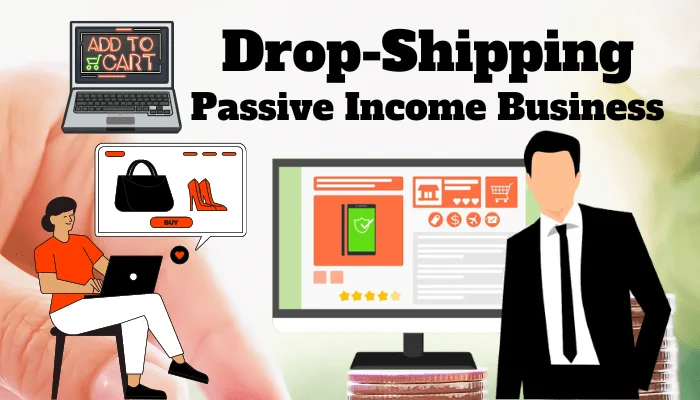Welcome to the exciting world of Recurring Revenue Streams! Ever wondered how some businesses seem to keep their cash flow rolling in consistently?
Well, you’re in for a treat because our comprehensive guide is here to demystify the magic behind the “Recurring Revenue Business Model“.
From the basics like Monthly and Annual Recurring Income to decoding the difference between Recurring and Non-Recurring cash flow, we’ve got you covered.
Buckle up as we explore the ins and outs of Recurring Amount, various business models, and unleash some creative Recurring Income Business Ideas that might just spark your entrepreneurial spirit.
This isn’t your typical business jargon; we’re breaking it down in simple terms to help you grasp the power of creating a business that not only survives but thrives in the long run.
Get ready for a journey into the heart of sustainable success – the world of recurring revenue awaits!
What Is Recurring Revenue?
Recurring revenue, simply put, is the steady income a business earns regularly. In a nutshell, it’s like having a dependable money buddy that keeps coming back for more.

The recurring revenue definition boils down to this: it’s the income a company can count on, like a subscription or a membership fee that customers pay regularly.
This predictable financial friend is the backbone of many successful businesses, ensuring a consistent flow of funds. So, when we talk about recurring earning, we’re talking about the kind of income that keeps the business wheels turning smoothly day in and day out.
Net Recurring Revenue?
Net Recurring Revenue is like the exact profit revenue of regular income. Imagine your business has its usual income, but then it puts on a cape and tackles any losses or changes.
It considers not only the money you gain from existing customers but also factors in any losses from cancellations or downgrades. It’s the total income you can count on, minus any hiccups.
So, if you want to see the real financial status of your business, look no further than Net Recurring Revenue – the factor that accounts for both the gains and losses in the ongoing battle for financial stability.
What is Monthly Recurring Revenue?
Monthly Recurring Revenue (MRR) is like your business’s monthly allowance, but better! In simple terms, the Monthly Recurring Revenue definition is the steady income a company expects every month from its subscription-based services or products.
It’s the dependable cash flow that rolls in consistently, providing financial stability. If your business offers monthly subscriptions, MRR is the sum of all those subscription fees.
It’s a key metric, helping businesses track and predict their monthly income, making financial planning a breeze. So, basically it is the reliable monthly income that keeps the business wheels turning smoothly.
How to Calculate Monthly Recurring Revenue?
Calculating Monthly Recurring Revenue (MRR) is as simple as pie. To find it, add up all the revenue generated from your monthly subscription services. If you have different subscription plans, tally up the fees for each plan. Easy, right?
Monthly Recurring Revenue Formula;- [ MRR = \text{Sum of all monthly subscription fees} ]
👉Let’s break it down. If you have 100 customers paying $20 a month and 50 customers paying $30 a month, your MRR would be:
👉[ MRR = (100 \times \$20) + (50 \times \$30) = \$2000 + \$1500 = \$3500 ]
Voila! You’ve got your Monthly Recurring Profit. This simple calculation helps you keep tabs on your regular income and make informed decisions for your business’s financial health.
What is Annual Recurring Revenue?
As per annual recurring revenue definition, Annual Recurring Revenue (ARR) is the total expected income from a business’s subscription services or products over a year. In simpler terms, ARR is the sum of all monthly subscription fees for a 12-month period.
To define Annual Recurring Revenue, it’s the anticipated annual income from maintaining subscription-based customer relationships. It serves as a vital metric for businesses, offering a clear picture of their yearly revenue potential.
ARR provides a strategic overview, guiding companies in planning and achieving sustained financial success throughout the entire year. In essence, it’s the total sum your business expects to earn annually from its recurring sources.
Annual Recurring Revenue Formula:-
The formula for Annual Recurring Revenue (ARR) is straightforward and useful for understanding the yearly income from subscription-based services. Annual Recurring Revenue calculation ARR:
👉ARR=Monthly Recurring Revenue (MRR)×12ARR=Monthly Recurring Revenue (MRR)×12
Simply put, take your Monthly Recurring Revenue and multiply it by 12 to get the ARR.
For example:-
👉if your MRR is $1,000, the ARR would be $1,000×12=$12,000$1,000×12=$12,000.
This formula provides a clear snapshot of the anticipated yearly revenue from your recurring sources, helping businesses plan and assess their long-term financial health.
What is Non Recurring Revenue?
Non-Recurring Revenue is like a one-time financial high-five for your business. Unlike the steady income from subscriptions or regular sales, non-recurring income happens infrequently.
It’s those special occasions when your business scores income that doesn’t repeat regularly, such as project-based work, one-time sales, or unique transactions.
Picture it as a surprise bonus – nice to have, but not something you can count on every month. This adds a sprinkle of unpredictability to your financial mix, reminding you that while subscriptions may provide stability, these occasional windfalls can also contribute to your overall business success.
Recurring Revenue Loans
Recurring Revenue Loans are a type of borrowing where businesses can get money based on their regular income. Imagine you have a shop, and every month people come in to buy things. The money you make from those sales is your recurring earning.

Now, if you need extra cash for your shop, this Loan lets you borrow money using your consistent monthly income as a guarantee.
Here’s the cool part: Instead of relying on a one-time big payment, these loans work by taking a small percentage of your monthly earnings to repay what you borrowed. This way, it’s easier for businesses to manage their finances.
For Example:-
Let’s say you own a subscription-based software company. Every month, customers pay to use your software, and this creates a predictable income stream for your business.
Now, imagine your company needs funds to develop new features. Instead of taking a traditional loan, you opt for a Recurring Revenue Loan.
With this loan, a lender looks at your consistent monthly income from subscription payments and agrees to provide you with a sum of money.
👉 If your monthly revenue is $10,000 and the lender offers a Recurring Revenue Loan of $50,000, they might agree to take 10% of your monthly income until the loan is repaid.
👉 So, each month, $1,000 would be automatically deducted to repay the loan. This way, you get the funds you need, and the repayments are linked to your steady income, making it a manageable and predictable arrangement for your business.
Recurring Revenue Business Models:-
Recurring Revenue Business Models are like magic for companies. It’s a way for them to make money regularly, just like a subscription to your favorite streaming service.

Instead of relying on one-time sales, businesses create a system where customers pay a regular fee for ongoing services or products. Imagine a gym membership – you pay every month to use the gym, creating a steady income for the gym.
Here are some key points about these Business Models:
- Steady Income Flow: These Business Models provide businesses with a consistent and predictable stream of income each month.
- Financial Predictability: Businesses with recurring revenue benefit from a reliable and forecastable financial environment, enabling better planning and growth strategies.
- Customer Loyalty: Subscription-based models foster customer loyalty, as individuals are more likely to stick around when they regularly receive valued services or products.
- Flexibility: These models offer businesses flexibility by establishing a reliable financial roadmap, making it easier to adapt to changing circumstances and invest in growth opportunities.
- Continuous Value Creation: Ongoing services or product updates provide continuous value to customers, ensuring they perceive the subscription as a worthwhile investment.
- Effective Recurring Revenue Management: Proper management of recurring revenue becomes a strategic advantage, allowing businesses to optimize their financial operations and maximize long-term success.
In essence, This Business Models make the financial world a bit more stable and businesses a bit more like your favourite TV show – always there when you need them.
Recurring Revenue Model Example
Here are some examples of this business model…
- Gym Memberships: Think of your local gym – you pay a monthly fee to use their facilities and services regularly.
- Streaming Services: Services like Netflix or Spotify offer a recurring income model where users subscribe monthly for access to a variety of content.
- Software Subscriptions: Companies like Microsoft with their Office 365 or Adobe with Creative Cloud charge users a regular fee for continuous access to software updates and features.
- Subscription Boxes: Companies like Birchbox or Blue Apron send curated products to subscribers each month, creating a steady income through ongoing memberships.
- Magazine Subscriptions: Traditional magazines often use recurring income models, where subscribers pay a regular fee for monthly or yearly issues.
Reoccurring vs Recurring Revenue
Here are some key-points that differentiate these both terms…
| Key-Points | Reoccurring Revenue | Recurring Revenue |
| 1. Definition | Steady and reliable income generated by a business through regular and ongoing customer payments. | Less commonly used term in business contexts; sometimes used interchangeably with “recurring.” |
| 2. Example | Subscription-based models like streaming services, software subscriptions, or monthly memberships. | May be employed to describe events or situations happening again but lacks the precise connotation of regularity associated with recurring income. |
| 3. Consistency | It Implies a high degree of predictability and regularity in income streams. | It May suggest repetition but lacks the specific financial connotation of regular income. |
| 4. Business Recognition: | Widely recognized and utilized in business discussions and financial planning. | Less common and may lead to confusion in formal business language. |
| 5. Financial Stability | Enhances financial stability by providing a consistent cash flow for businesses. | May not convey the same level of financial stability associated with recurring revenue. |
| 6. Subscription Models: | Often linked to subscription-based business models, where customers pay regularly for ongoing services. | May lack the specific association with revenue generation through subscriptions. |
| 7. Industry Standard: | Considered a standard and widely adopted concept in financial and business discussions. | Less commonly used in formal business language and financial contexts. |
| 8. Precision in Communication: | Ensures clear communication about a business’s financial model and income strategy. | Might lead to ambiguity in conveying specific financial concepts. |
Recurring Revenue Business Ideas
Recurring revenue business ideas are like having a steady flow of income that keeps coming back for more. Here are some simple ideas:
- Subscription Boxes: Send people surprise packages every month, and they pay you regularly.
- Membership Websites: Create a special online club where members pay a monthly fee for exclusive content or services.
- Software as a Service (SaaS): Build a useful app or software that people pay to use regularly.
- Online Courses: Teach something you’re good at online and charge a fee for access.
- Gym Memberships: If you have a fitness space, people pay you each month to use it.
- Streaming Services: Start a platform where people subscribe to access music, videos, or other content regularly.
Recurring revenue means you’re not just selling once; you’re creating a steady income stream that continues over time. It’s like planting seeds that keep growing into money trees.
READ MORE 👉 200+ Best Recurring Affiliate Programs to Earn Lifetime
Conclusion:-
In a nutshell, diving into the world of recurring income is like unlocking the secrets to long-lasting success. We’ve covered everything from understanding Monthly and Annual Recurring Income to figuring out the cool difference between Recurring and Non-Recurring money stuff.
Check out different business models, and get creative with fresh Recurring Revenue Business Ideas. This guide will help you to building a business that keeps going and growing.
So, buckle up, use these insights, and watch your business ride the waves of success with the magic of recurring income!
READ MORE:-
- 👉 What is Passive Income Stream & Why Creating One is Always Crucial?
- 👉 Understanding 3 Types of Income – Earned, Passive, and Investment
- 👉 How to Create Multiple Streams of Income in Your 20s?
I hope you liked this info! If you want more or have questions, let me know. I’m all about making this content super helpful. I’ll keep it coming with more good stuff. Thanks for reading, and I’ll chat with you soon. Have an awesome day!




